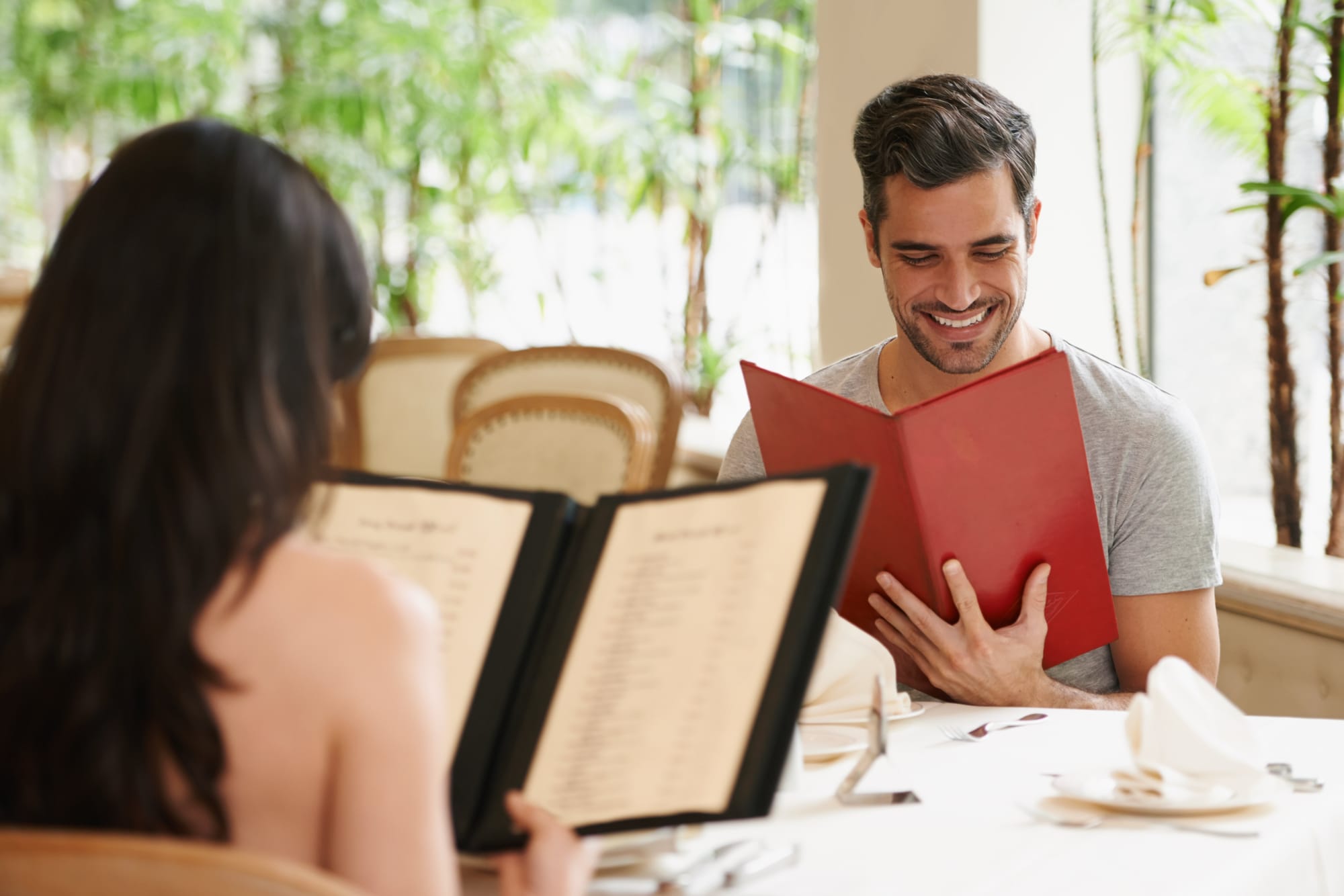On average, diners spend just 109 seconds scanning the menu. In under two minutes, the human brain is making dozens of decisions and assumptions—many of them subconscious—about the meal, the restaurant, and even overall satisfaction before the first bite.
A well-designed menu is far more than a list of food; it’s a communication tool. In the same way advertisers guide your eye with logos and slogans, menus can be carefully crafted to nudge your guests’ attention, spark cravings, and influence spending. Guests may not even be aware, but a good menu sells specific dishes before they decide what they want to order.
- Where Your Eyes Go First
A concept called the "Golden Triangle"” explains the path focus. When we open a menu, our eyes naturally move to three main areas: the top right corner, the center, and then the top left. This is prime real estate for restaurants, where they place high-margin items or signature dishes. If the chef’s specialty pasta is right in the center of the page, it’s not by accident. - The Power of Anchoring
Anchoring is a cognitive bias where your brain gives extra weight to the first piece of information you see. On a menu, this often means a high-priced dish might sit at the top of a section. It’s not designed to be a popular choice, but its placement makes the other (still pricey) options look like a bargain. Seeing a $45 steak first makes that $30 chicken suddenly seem “reasonable.” - First and Last Items Matter Most
In each menu section, the order of items plays a crucial role in influencing decisions. Psychologists call this the Serial Position Effect, which suggests that people are most likely to remember the first and last items they see. The first item in a section benefits from the primacy effect. It sets the tone for the rest of the options and often sticks in the brain longer. The last item benefits from the recency effect, meaning it’s the freshest option in your memory as you finish scanning the section.
Restaurants can use this to their advantage by placing their most profitable or popular dishes at the very top and bottom of each menu category. This ensures that even if the guest skims quickly, they’ll notice these options. Savvy restaurateurs prioritize high profit items in strategic locations. - Why Less is More: The Paradox of Choice
While diners might assume they want hundreds of options, psychology says otherwise. Too many choices lead to decision fatigue, where the brain struggles to choose and satisfaction declines. Research shows that menus with fewer items often lead to happier diners. Why? Because the brain prefers simplicity. - The Halo Effect: Reading Between the Lines
Interestingly, even the placement of dishes shapes how you judge them. A dish in the center of a page feels more significant than one buried at the bottom. This positioning taps into the Halo Effect, where one positive assumption spills over into others. If the dish seems important, you assume it’s delicious, too.

The Bottom Line
In just 109 seconds, the menu has whispered its message: here’s what’s good, what’s special, and what’s worth your money. Your brain’s subconscious shortcuts—anchoring, visual cues, and item placement—have already set expectations for the dining experience.
When you take that first bite, it’s not just your taste buds reacting—it’s your mind affirming (or questioning) the story the menu told. Great food matters, of course. But the silent science of menu design shows us something powerful: in dining, the brain eats first
Dr. Melissa Hughes is a keynote speaker, author, and self-proclaimed neuroscience geek. She is the author of Happy Hour with Einstein, and Happier Hour with Einstein: Another Round. Dr. Hughes combines extensive research in neuroscience, behavioral science, and psychology to help restaurateurs and hoteliers apply science to create exceptional guest experiences.
Learn more at MelissaHughes.rocks.

